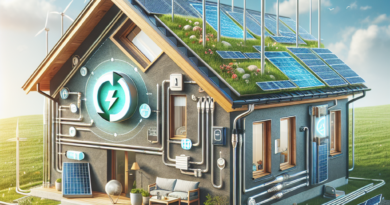Wind farms, there is a problem (and a big one at that). How to dispose of aged shovels?
The use of wind energy is increasing worldwide and with it also its challenges for the disposal of systems.
As demonstrated by the most recent data from Global Wind Report 2022, in 2021 alone the global installed wind capacity was equal to 837 GW, with an increase of +12.4% compared to the previous year; according to experts, the exploitation of this renewable energy should increase exponentially in the coming years.
Yet, innovation presents the scientific community with new evidence to deal with, such as the recycling of wind turbine blades: the greater the use of wind energy, the greater the volume of wind turbine elements that will have to be disposed of.
In fact, according to estimates from research by the University of Cambridge, by 2050 there will be as many as 43 million tonnes of material from the wind industry that will need to be disposed of.
And if most of the materials in a wind farm are perfectly recyclable, what remains is a real puzzle for researchers.
Here's what the problem is with wind turbine disposal and what the solutions can be.
Below is everything you need to know.
read also This large company has found the solution to completely recycle plastic Wind power plants, there is a problem with disposal: here's why In recent times it is possible to observe a replacement of wind turbines produced in the 90s-2000s with the latest ones generation, who are taller and more powerful than the old ones.
Yet, the problem is precisely the disposal of the latter.
In fact, if around 90% of the turbine components are easily recyclable since they are made of metals such as aluminium, copper and steel, wind turbine blades are another story.
These, in fact, are made of fibre-reinforced polymers (FRP), for greater precision with a glass fibre, then covered with a resistant epoxy resin, designed to resist years of damage from atmospheric agents.
Precisely the polymer elements, which make wind turbine blades so durable, are the problem from a recycling point of view, as they make it difficult to break down the blades.
Causing these blades to be mostly disposed of in landfill, an option that will not be sustainable in the long term.
Wind power plants, how to dispose of aged blades? Traditional solutions for disposing of wind turbine blades involved the use of some pieces, discarded blades, in cement production kilns, even though this procedure constitutes a highly energy-intensive process.
Again, the blades have been reused or reassembled.
Today, however, experts are looking for innovative solutions that involve the reuse of shovels in playgrounds or bicycle sheds.
These solutions have proven to be effective at a local level, but which may not be enough in view of a future wind turbine disposal volume of 43 million tonnes.
We need a system that works on a larger scale.
Scientists and start-ups are working on how to separate the fibers from the resin in one way or another, so as to ensure complete recycling of the materials.
Among the most promising projects is the one developed by the University of Strathclyde, which involves breaking down the blades into small pieces and placing them in a flow of very hot air, in order to separate the fiberglass from the resin.
The first can be collected, treated and reused, as explained by Malcolm Forsyth, who leads the PRoGrESS project, which aims to commercialize the technology.
Another interesting project is that of the Danish company Vestas, the largest manufacturer of wind turbines in Europe, which sees the use of a liquid chemical solution to break down the blades into materials that can potentially be used to make new blades.
Enel Green Power is also working on this front, recently launching two challenges to gather ideas on possible ways of recycling and reusing wind turbines, and of building insulation from disused blades.
Challenges to be answered via the Open Innovability platform.
If these technologies were to be successful, we could not only solve the problem of new waste arriving, but we could also address the problem of "historic waste", those blades abandoned in landfills that could soon have a second life.
read also Incredible, the least polluting car of 2024 is not electric but combustion




